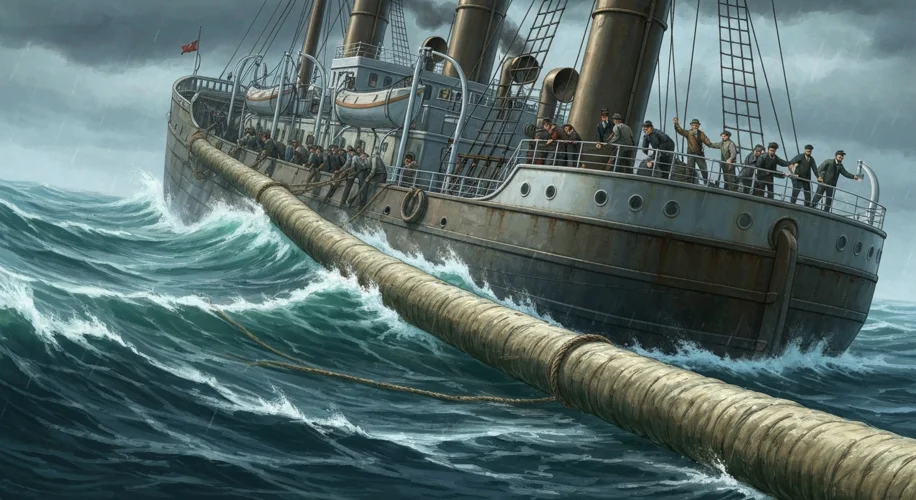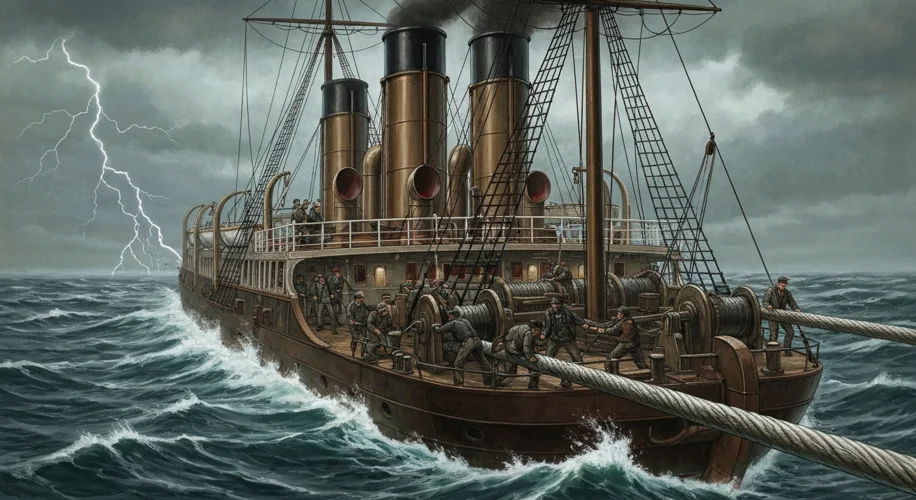Imagine a world without instant global communication. No rapid news from afar, no swift financial transactions across continents, no real-time video calls connecting loved ones. This was the reality for millennia. Then, in the mid-19th century, a revolutionary invention began to quietly knit the world together: the undersea telegraph cable.
Before the advent of these underwater arteries, communication across vast distances was a snail’s pace affair. News traveled by ship, taking weeks or months to cross oceans, often arriving after the events it described were long past. This limitation profoundly shaped diplomacy, commerce, and even warfare. Empires struggled to manage distant territories, and businesses operated with a significant lag in market information.
The breakthrough came with the understanding of electricity and its transmission. Early experiments with land-based telegraph lines in the 1830s and 1840s proved the concept, but the ultimate prize was to bridge the oceans. The English Channel was conquered in 1851, a crucial stepping stone. But the Atlantic, that vast, tempestuous expanse, presented a far greater challenge.
Several ambitious figures emerged, driven by vision and often, significant personal fortune. Among the most prominent were Cyrus West Field, an American entrepreneur, and John W. Brett, a British engineer. Field, in particular, was a force of nature, tirelessly raising capital and overcoming immense technical hurdles. He envisioned a truly global network, one that would shrink the world and foster unprecedented interconnectedness.
The early attempts to lay a transatlantic cable were fraught with failure and heartbreak. The sheer scale of the undertaking was staggering. Imagine a ship, sailing across miles of unforgiving ocean, attempting to unfurl a delicate, insulated copper wire across a seabed that was, for the most part, an uncharted wilderness. The depths were immense, the currents powerful, and the technology nascent.
1857: The First Fumble
Field’s first attempt in 1857 ended in disaster. The cable, a mere 2,500 miles long, snapped during the laying process. This was followed by another failed attempt in 1858. The early cables were too thin, their insulation inadequate, and the technology for detecting breaks and repairing them non-existent. Discouragement was rife, and many declared the project impossible.
1866: The Triumph
Undeterred, Field and his backers persisted. The Anglo-American Telegraph Company was formed, and a more robust cable, encased in layers of gutta-percha insulation and protected by iron wires, was manufactured. On July 29, 1866, after years of planning and previous failures, the Great Eastern, a leviathan steamship capable of carrying the immense length of cable, began its journey from Ireland. This time, success was achieved. The cable landed successfully in Newfoundland, and with it, the age of instant transatlantic communication was born.

The impact was immediate and profound. News of events in Europe could reach America within minutes, not weeks. Stock prices could be updated in real-time, transforming financial markets. Diplomatic messages could be sent with unprecedented speed, averting misunderstandings and fostering closer international relations. The world, once a collection of disparate lands, began to feel like a single, interconnected entity.
The success of the transatlantic cable spurred further development. By the end of the 19th century, a network of undersea cables crisscrossed the globe, linking continents and colonies. The British Empire, in particular, leveraged this technology to maintain its vast reach, with a web of cables allowing for swift communication between London and its distant territories.
However, these vital arteries were not without their vulnerabilities. Ships’ anchors could sever them, geological events could damage them, and during times of conflict, they were prime targets for sabotage. The very interconnectedness they fostered also created new points of strategic importance and potential weakness.
The legacy of these early undersea cables is immense. They laid the groundwork for the telecommunications infrastructure we rely on today, from fiber optic cables to the internet itself. They demonstrated the power of technological innovation to overcome geographical barriers and fundamentally alter the course of human civilization. The next time you send an email or make a video call, remember the silent, submerged cables that, over a century ago, first began to weave the invisible threads that connect us all. The world we inhabit, one of instant global dialogue, was, in large part, laid on the ocean floor, one submerged strand at a time.

